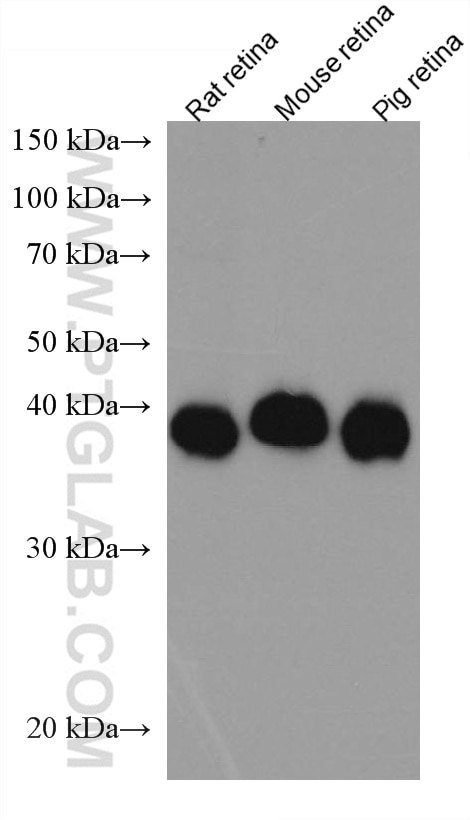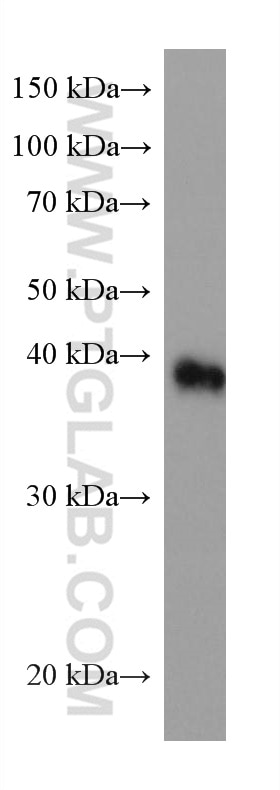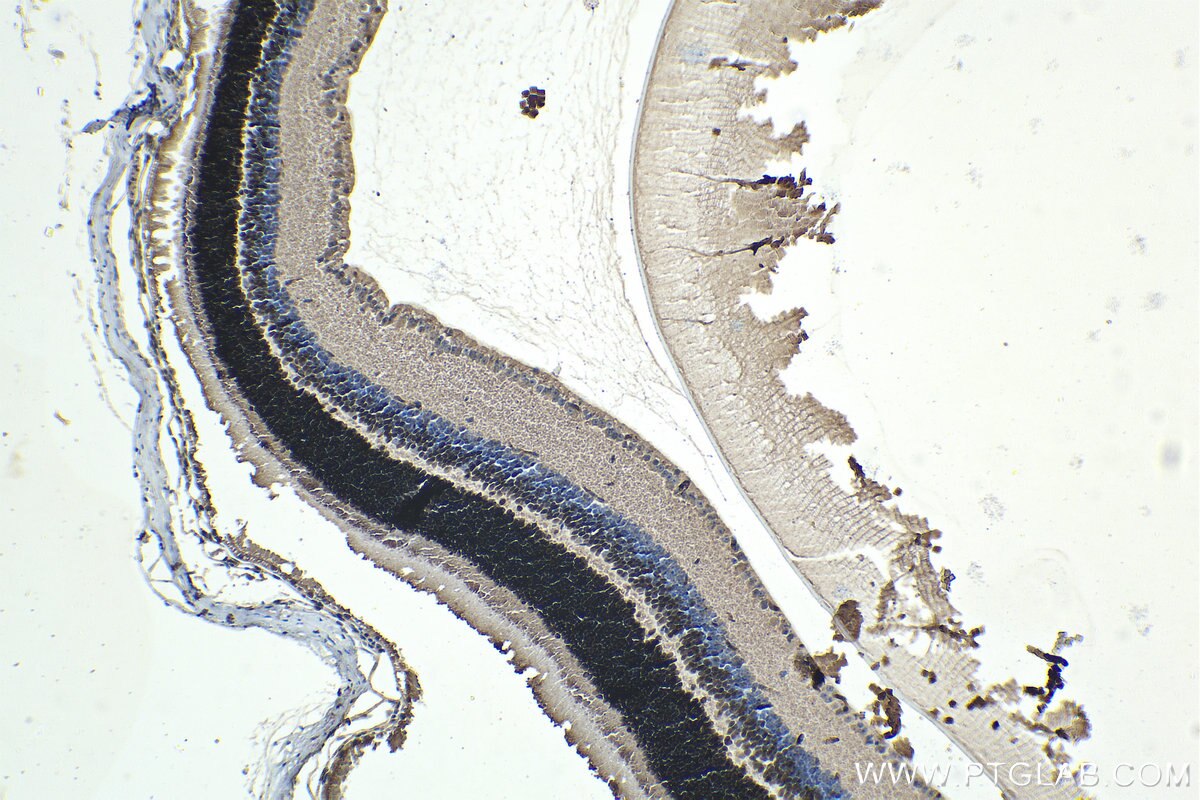Validation Data Gallery
Tested Applications
Recommended dilution
| Application | Dilution |
|---|---|
| It is recommended that this reagent should be titrated in each testing system to obtain optimal results. | |
Product Information
67555-1-PBS targets CRX in WB, IHC, Indirect ELISA applications and shows reactivity with Human, mouse, rat, pig samples.
| Tested Reactivity | Human, mouse, rat, pig |
| Host / Isotype | Mouse / IgG1 |
| Class | Monoclonal |
| Type | Antibody |
| Immunogen | CRX fusion protein Ag30086 相同性解析による交差性が予測される生物種 |
| Full Name | cone-rod homeobox |
| Calculated molecular weight | 299 aa, 32 kDa |
| Observed molecular weight | 37 kDa |
| GenBank accession number | BC016664 |
| Gene Symbol | CRX |
| Gene ID (NCBI) | 1406 |
| RRID | AB_2882769 |
| Conjugate | Unconjugated |
| Form | Liquid |
| Purification Method | Protein G purification |
| UNIPROT ID | O43186 |
| Storage Buffer | PBS only , pH 7.3 |
| Storage Conditions | Store at -80°C. |
Background Information
Cone-rod homeobox (Crx) is a homeodomain transcription factor and member of the Otx family, which has been thought to play a critical role in determining and maintaining the phenotype of both pinealocytes and retinal photoreceptors [PMID:17467693]. In the mammalian retina, Crx plays an essential role in the normal development and maintenance of cones and rods and regulates expression of the network of genes that characterize the retina [PMID:17653270]. Elimination of Crx by disruption of the homeobox domain results in loss of the image-forming visual system but not the non-image-forming visual system controlling circadian rhythms [PMID:20438719].


